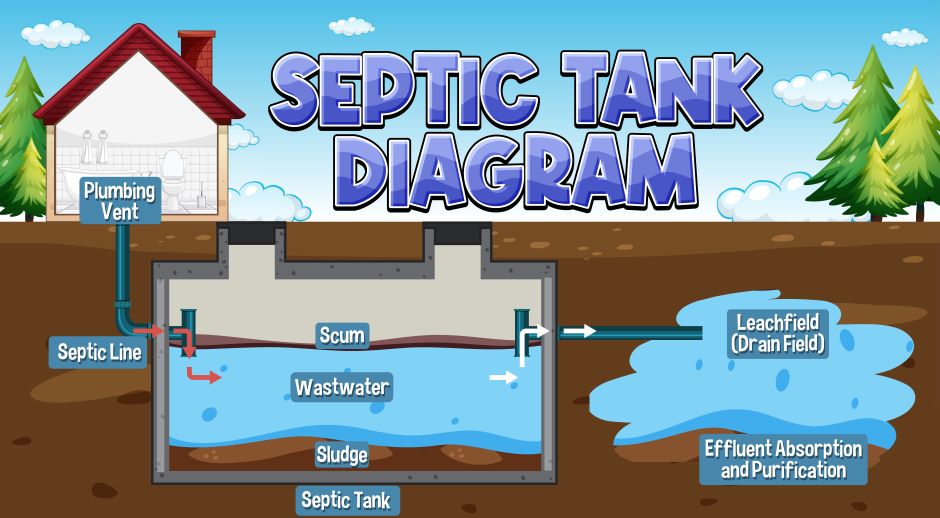
When it comes to handling wastewater efficiently and responsibly, a septic tank plays a crucial role whether you reside in a bustling urban area or a serene rural setting. It is a large underground container designed to treat and manage domestic wastewater.
In this comprehensive guide, you will go into all the details about the septic tank, how it operates, and why it matters. After you finish reading, you will be able to make thoughtful decisions about the wastewater management of your residence.
What Is A Septic Tank?
At its core, a septic tank can be considered a large underground container designed for homeowners to treat and manage domestic wastewater. It acts as an on-site sewage system for properties that are not connected to the municipal sewer lines.
The primary purpose of a septic tank – which is different from a septic system – is to separate solids from the wastewater, allowing the treated effluent to be safely absorbed into the soil.
What Is A Septic System?
A septic system encompasses more than just the septic tank itself. It consists of a network of pipes that transport wastewater from your home to the septic tank and further to the drain field.
The drain field, also known as the leach field, is an essential component where the clarified septic water undergoes final treatment as it percolates through the soil. Thinking of a septic tank diagram is a great idea to understand the whole system.

What Is A Septic Tank Used For?
Septic tanks are an integral part of residential, commercial, and industrial properties that lack access to centralized sewer systems. They serve as a self-contained, decentralized wastewater treatment solution, ensuring that waste is disposed of in an environmentally friendly manner.
By relying on natural processes and bacterial action, septic tanks break down the waste, making it less harmful to the environment, and if you want to know the differences between septic tanks and cesspools you can read this other eHARDHAT's article.
How Does A Septic Tank Work?
The working principle of a septic tank is based on a simple yet effective process. Similarly to dry wells, some pipes go from the house to the septic tank, and when wastewater from your toilets, showers, kitchen sinks, and laundry drains enters the septic tank, the solids and liquids begin to separate.
Heavier solids settle at the bottom of the tank, forming a sludge layer, while lighter materials, such as oils and grease, float to the top, creating a scum layer. The bacteria in the tank naturally start breaking down the organic matter within the wastewater.
Over time, the clarified wastewater in the middle layer flows out of the septic tank and into the drain field – through a series of perforated pipes. The soil acts as a natural filter, removing harmful bacteria, viruses, and nutrients from the effluent before it rejoins the groundwater supply.
How Do Septic Tanks Work In Rural Areas?
Rural areas often lack access to centralized sewer systems, making septic tanks an ideal solution for wastewater management. The vast expanse of land available in rural settings allows ample space for drain fields, promoting better percolation and treatment of wastewater.
This decentralization reduces the strain on municipal wastewater treatment plants and helps maintain the natural balance of the environment. Septic systems in rural areas offer residents greater independence and control over their wastewater treatment.
Anyway, whether you intend to add it to a house, a commercial place, or a rural area residence, the septic tank is a great choice for sure! Call eHARDHAT's plumbing contractors to help you with yours.






